As I get off the plane, I must get through a draconian sanitary control. The agent auscultates the hiking shoes and confiscates my tent to check no clod of earth remained clung to the poles. I meet a Frenchman and a Belgian I spend the afternoon with and we land into a youth hostel. According to the number of the wall-hanging brochures, we understand New Zealand is extremely well-prepared for tourism. It's probably here the modern nomadism was invented and never stopped improving.
12 hours of jet lag, hard to go farther except getting on a boat and sailing more eastwards. I'm exactly at the other end of the planet, at the bottom right in the geographical map. New-Zealand is a country that will remain perfectly unknown for many people if it didn't house the best rugby team in the world. Despite the recent feat of the French coqs during the worldcup, this small 4-million-inhabitant island lives at the rate of the rugby and its teams such as the Auckland Blues or the Wellington Hurricanes.
In a bookshop, the Tana Umaga's autobiography has its stall and I rush up to glance through. He talks about the fervour of the Toulon (the city where I live) spectators and 2 beautiful pictures are within the book. For sure, the inhabitants of the country of the long white cloud will know where to pinpoint the harbour of Toulon in the southeast of France.
After several months of a disjointed life, I find back a European-like atmosphere, a country where we pay attention to the road signs and where the horn is pushed down only in case of a compelling necessity. The city of Auckland is calm with a low traffic.
I leave the youth hostel to meet my Couch Surfing's hosts who will house me for 2 nights. Jenny and Tamz welcome me with a large smile and I feel at home in their house. Another guest is here as well with whom, the next day, go to visit Auckland. The harbour and its boats of the America's cup, the lively Queen street and the sky tower we can jump off from, hanging on a rope.
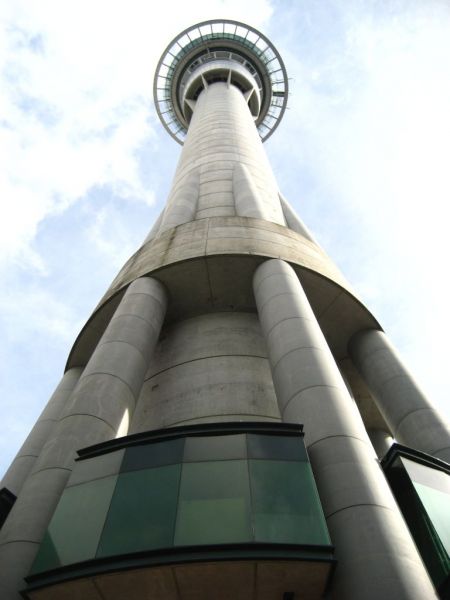

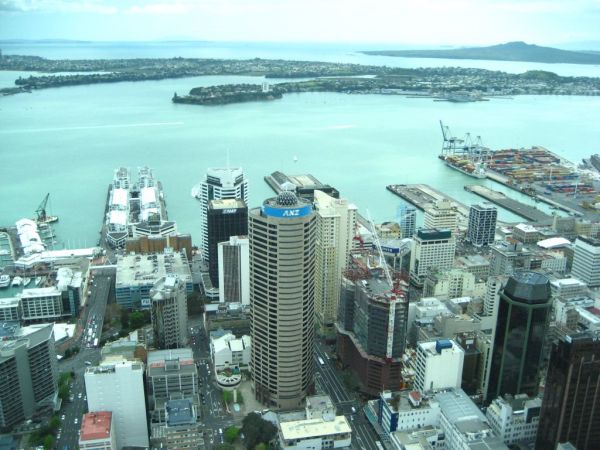
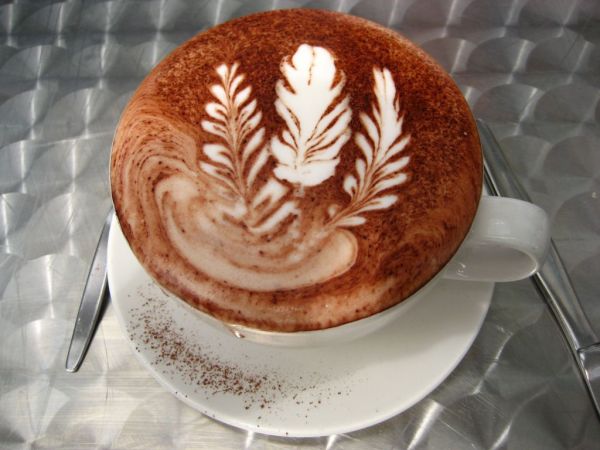
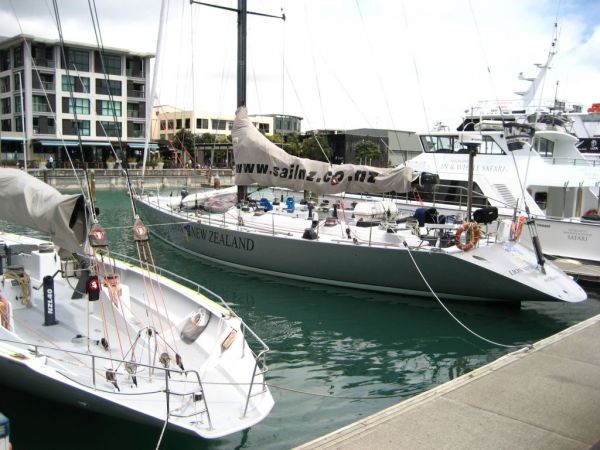
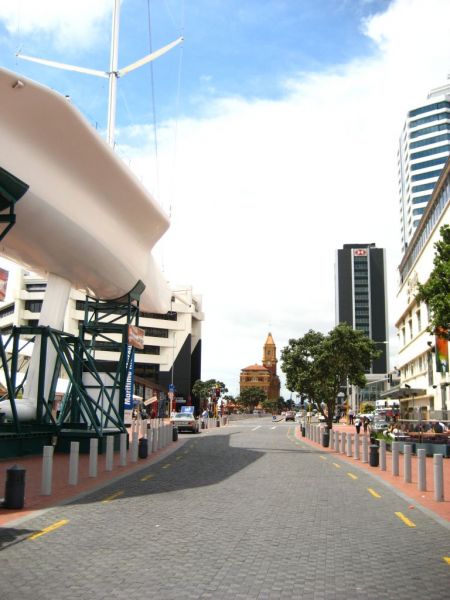

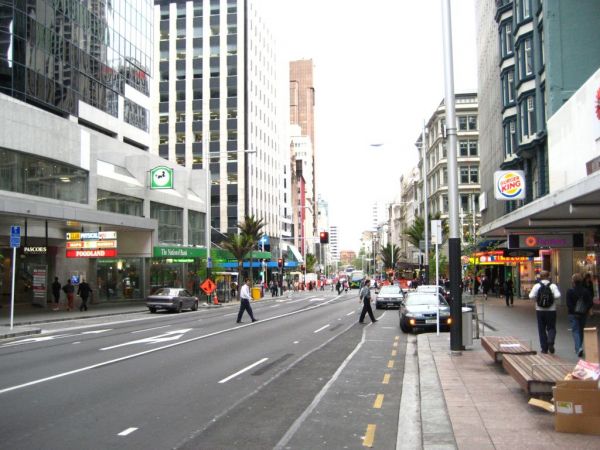
As we go back, I meet my brother I haven't seen for several months and I'm happy to meet him. He rented a small car that makes the trip easier and planed a full programme to do. There are all these activities that are tempting and have the strange name of : bungie-jump, cave-abseiling, hydrospeed jet, rafting, kayak, tramping, sky diving and the zorbing (rolling downhill within a big ball). The activities are expensive but we will probably succeed in doing some of them. Let's go for one month of adventures in the kiwis' country!
Keyword - first steps -
Thursday 1 November 2007
2 twins at the kiwis' country
By dorian on Thursday 1 November 2007, 19:04 - RTW-New Zealand
Sunday 16 September 2007
First steps in Delhi
By dorian on Sunday 16 September 2007, 19:02 - RTW-India
I leave Nepal to embark on the Indian adventure. Only 15 days spent in this magical country, but the departure is heartrending. Flight from Kathmandu to Delhi. I experience a dual feeling as I get off the plane. An overwhelming desire to discover this country-continent and a deep reluctance fed by the numerous divergent opinions I gleaned so far. India, we love or we hate but we can't stay indifferent. I'll know more in one month.
Religiously or culturally rich, the country is a patchwork of imposing monuments, dynamic and warm-hearted people nodding the head to give their agreement and wonderful landscapes. "Incredible India" the billboards hammer out. I don't know where to start the trip from : following the Ganges eastward to reach the sacred city of Varanasi and perhaps extend to Calcutta and the Sikkim state ; heading northward for a bit of coolness at the foothills of the Himalaya and dipping into the buddhist fervour in Dharamsala, dalai lama's resting place ; going by the jewels of the Rajasthan westward and getting to the Punjab, country of the sikhs or, drifting southward to finish on a heavenly beach next to Goa, the former Portuguese protectorate.
The heavy religious differences keep the look on. The sikhs' turbans frequent the muslim djellabahs, the shaved-headed Buddhist monks and the Hindu tikkas while jainists dust a bench before sitting. As I get out the airport shuttle-bus, the night has fallen. I meet a German that leads me to a cosy guesthouse in the Paharganj district. En route, the first pictures of poverty and dirtiness. Lots of beggars, invalids and disabled persons strew the streets without having another place to sleep. Pestilential smells shake me. Rats dig the garbage areas and the horns of the rickshaws get through the traffic jam. The German relates me his ending trip in India when I'm in a hurry my Canadian friend arrives because 2 are not too much to cheer up one another.
More than 2 years we haven't seen at each other, and Alain shares this desire and this reluctance to discover India. We walk to visit the red fort I hardly appreciate. I didn't digest my first meal in India...

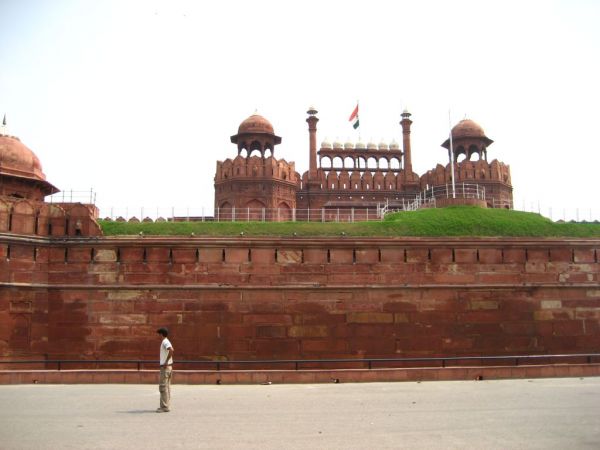
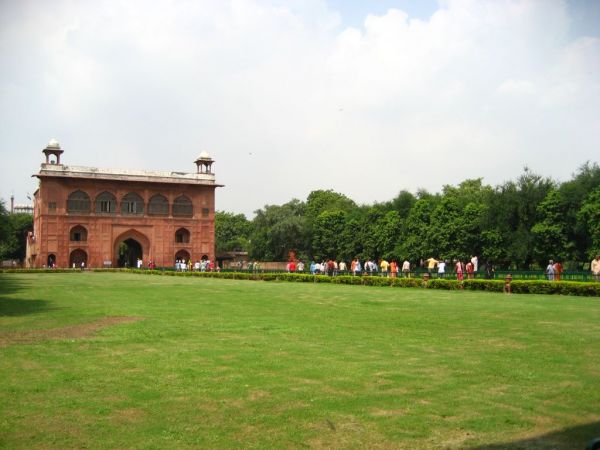
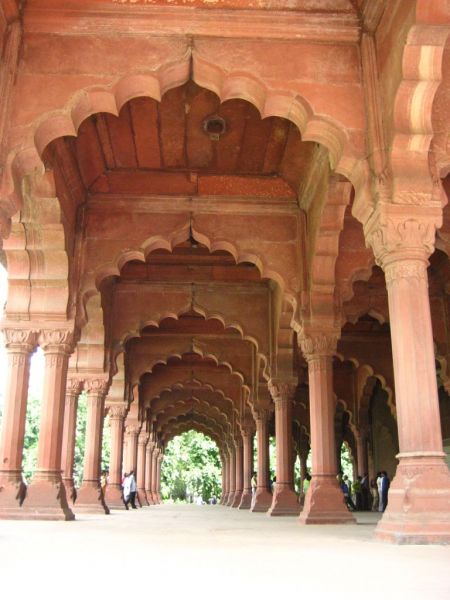
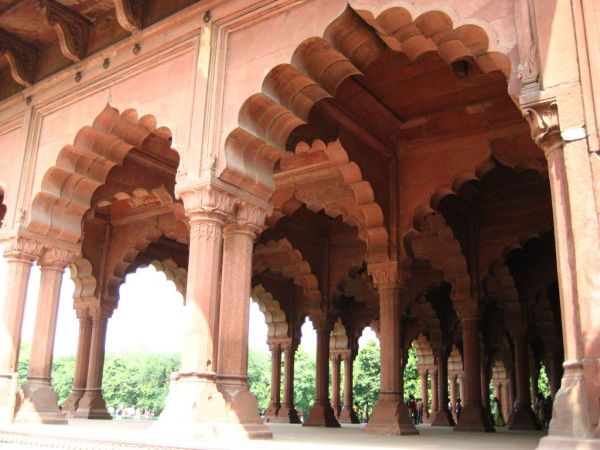
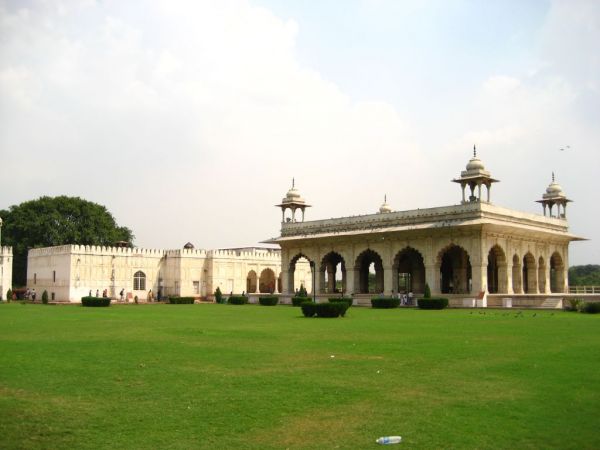
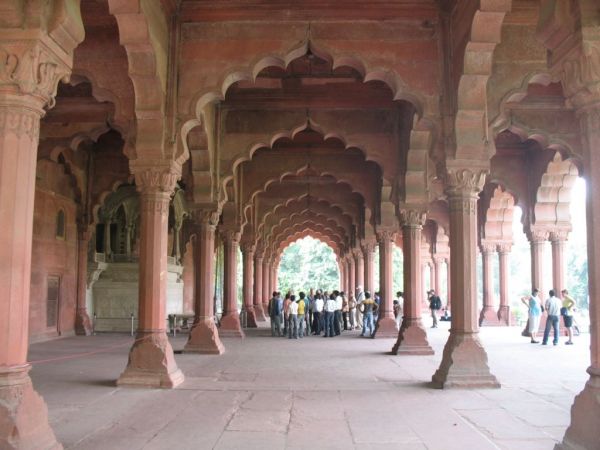
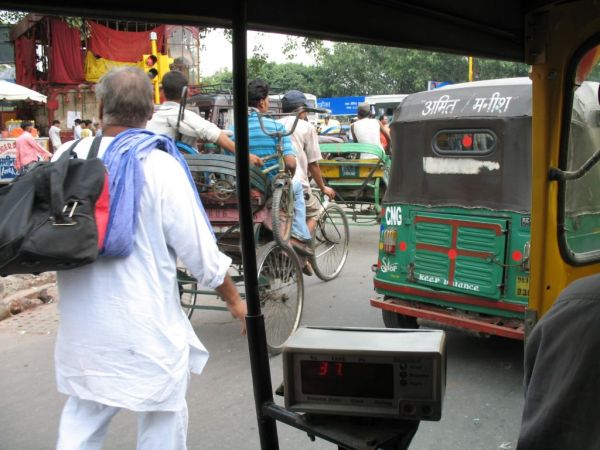
We decide to leave Delhi by the morning train to Shimla, in the northeastern Himachal Pradesh state. A necessary exile. Searching for a bit of coolness and serenity, a more rural India. Our spirit isn't enough well-prepared to accept the contrasts of Delhi despite the hospitality and the kindness of the Indians.
Friday 31 August 2007
First steps onto the "roof of the world" country
By dorian on Friday 31 August 2007, 22:35 - RTW-Nepal
Namaste ![]()
"Welcome to Nepal" hurls the wide-smiled Nepali officer giving the passport back to me. He's just appended the precious key which opens me the door of this heavenly country for outdoor activities. I plan to stretch my legs onto some paths of the Himalayan foothills. The country has the distinctive feature to harbour a part of the Himalaya range in the north (the highest mountains range in the world with 8 of the 14 above-8000-meter summits whose legendary Everest climbed in 1953 for the first time by Sir Edmund Hillary and the sherpa Tenzing Norgay) and jungle scenery in the south.
Getting out the airport, the tourism office arranges me transportation and hotel for 10$.
In the beginning of this month of September, the monsoon still pounds the country and the surroundings of the capital city are green. This capital and its Chinese neighbour are incomparable. Old tottering jalopies stroll onto the rough roads. Ill-fitting buildings and smiling Nepali people put up the Kathmandu scenery. I reside in the Thamel district that is tantamount to the Khao San Road in Bangkok. Every backpackers' facilities gather in this district : restaurants, guesthouses, travel agencies, deep "mountainous" connotation libraries, local craft and trekking outfit sellers. With all the tourist-inherent side issues. Marijuana dealers mix with begging children and touts. The pleasure to be Nepali for about fifteen days doesn't make forget the distress of a country which is counts among one of the poorest in the world.
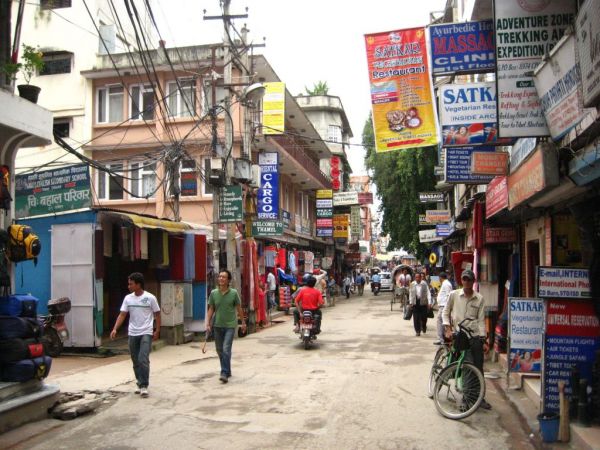
I meet an Italian I embark on visiting the city with. We walk through the market and stop at the sacred and colourful Durbar square.

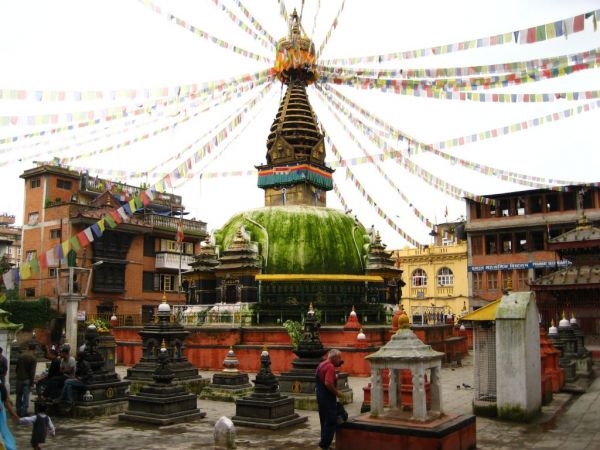
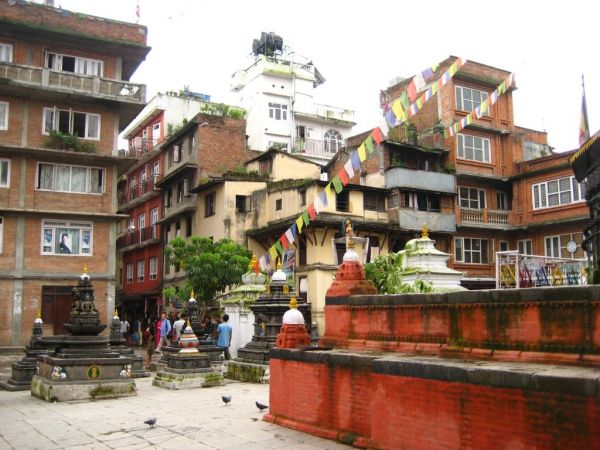
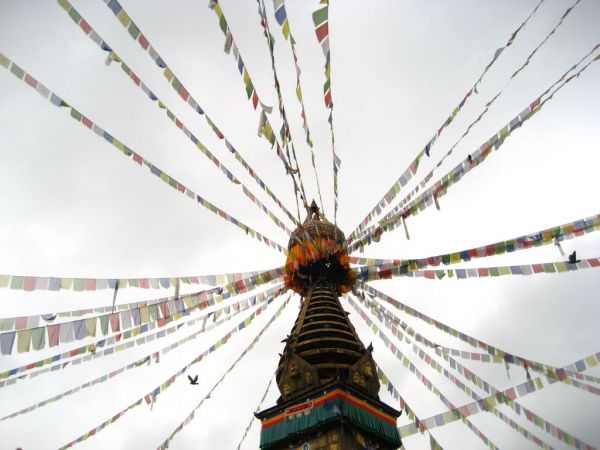

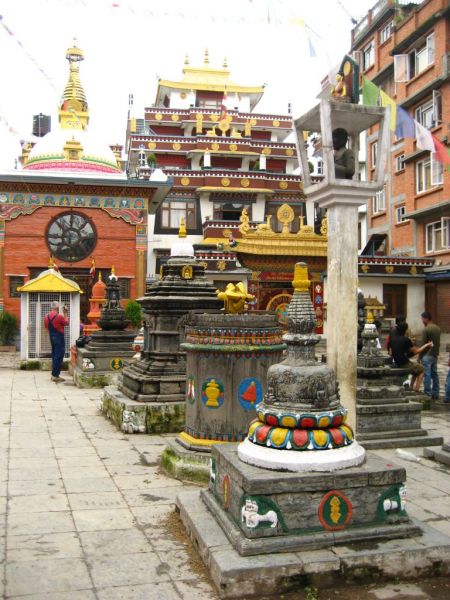
We walk for one hour to reach Patan, an outstanding assembly of Hindu temples. The access to the temple is forbidden to the non-Hindus and from outside, we observe the religious ceremonies. The temples are beautifully carved. I discover the traditions of this religion; I familiarize myself with its precepts and its rules. Hindus wear the tika, the forehead-painted third eye, the one that sees everything. We become soaked with this religious aura before heading back to our lively district.
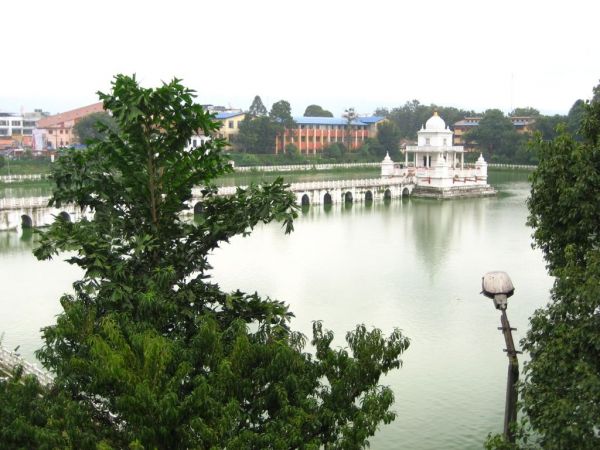
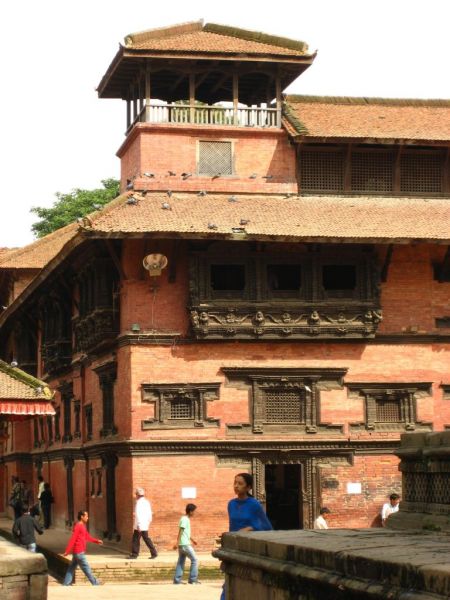
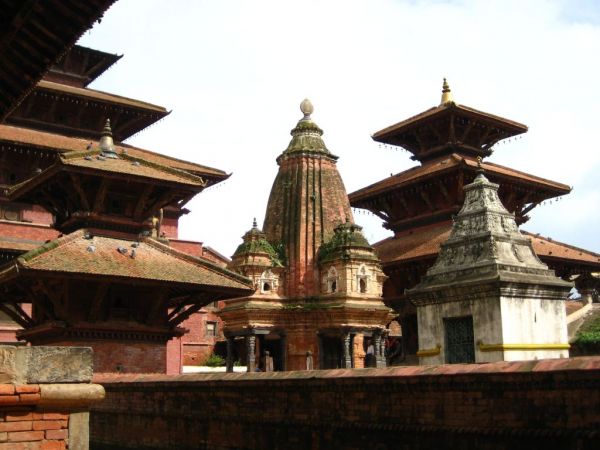
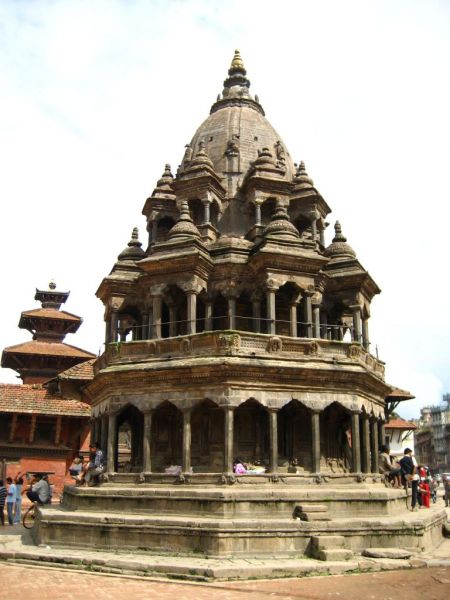
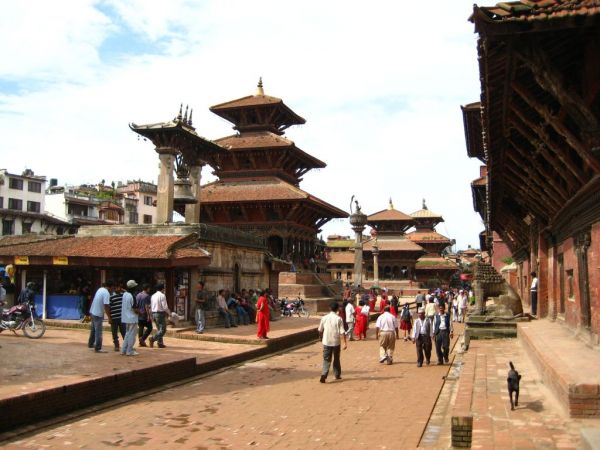
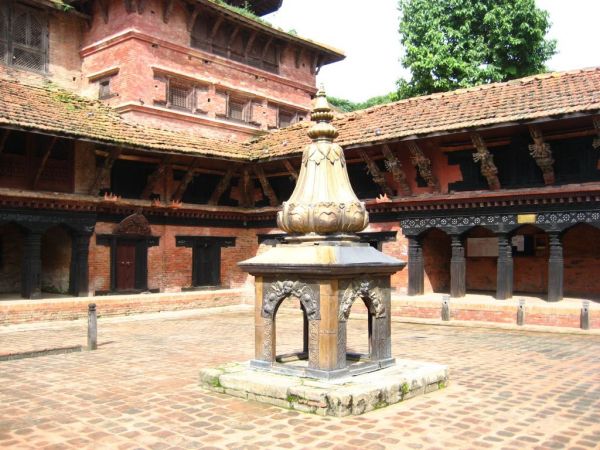
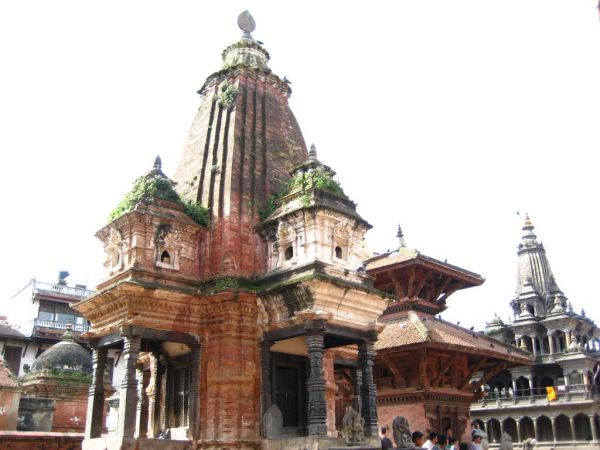
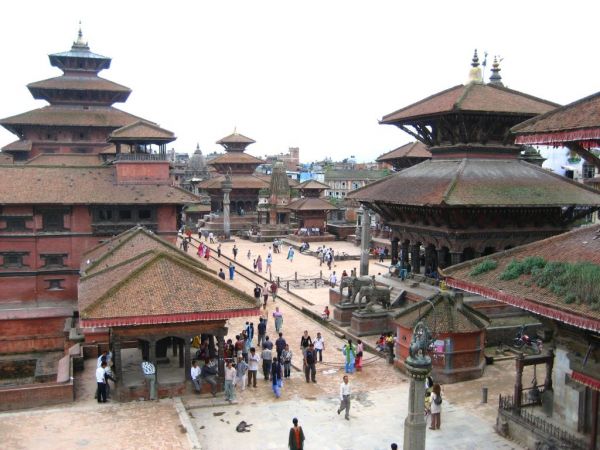

East from the Thamel district, one of the most popular Buddhist temples in Kathmandou is called Swayambhunath, not easy to say it in a conversation without mispronouncing a syllable. Built on a hill, a scheming stupa occupies the central position of the religious area. In the area around, faithful people and tourists lean on to contemplate the unstructured houses of the capital.
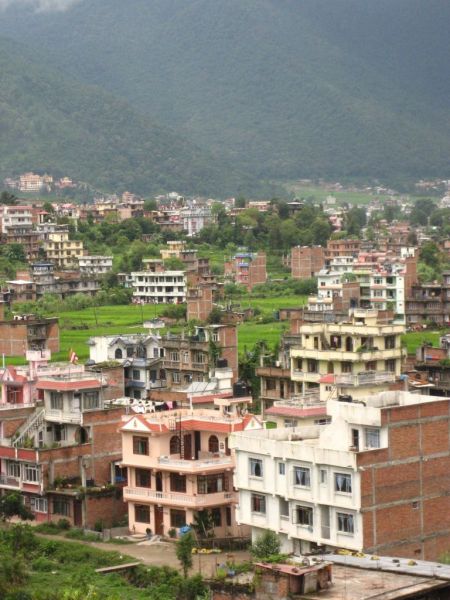
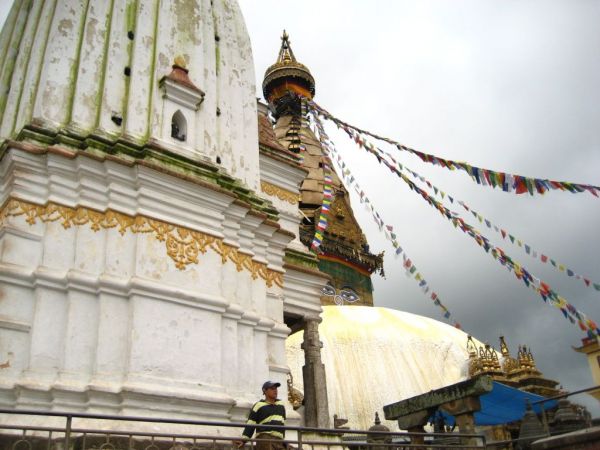
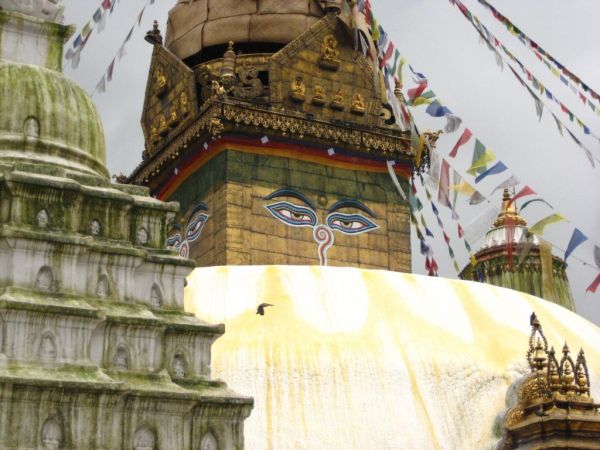
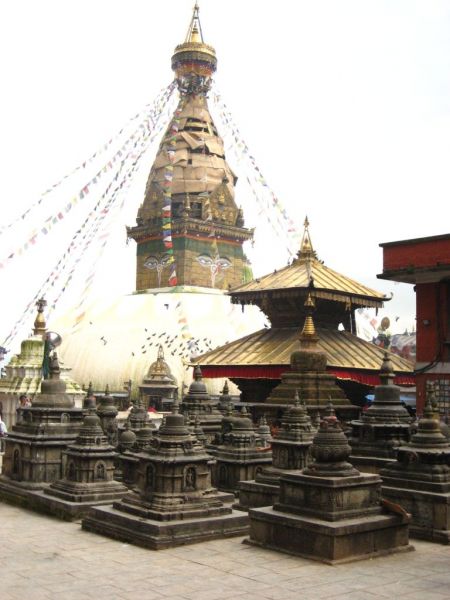
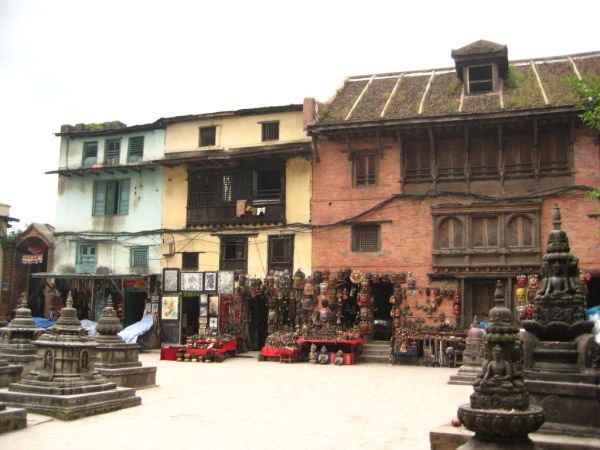

On the other side of the city, the temple of the lord of the beasts Pashupatinah is dedicated to the Hindu religion. Below the temple, the sacred river Bagmati flows, and it's the scene of my first cultural shock. From the other bank, I'm a witness to the cremation rites. Pieces of timber are piled up to a stone slab, the orange-shrouded defunct's body lays out on this wooden bed. The tradition wants the son to walk three times around the body before putting a flaming torch inside the defunct's mouth. A last loop by way of farewell and the purification can start. Several stakes occupy the bank. A crying kid who will respect the rite until the end tears through the silent atmosphere. Emotionally too hard to bear, I prefer to move away. The Bagmati banks deal with the death with a different angle, without anything relative to our culture and I believe we need time before stomaching that kind of experience. Even if everybody knows as Marcel Pagnol said : "the life is a beautiful story that ends bad."

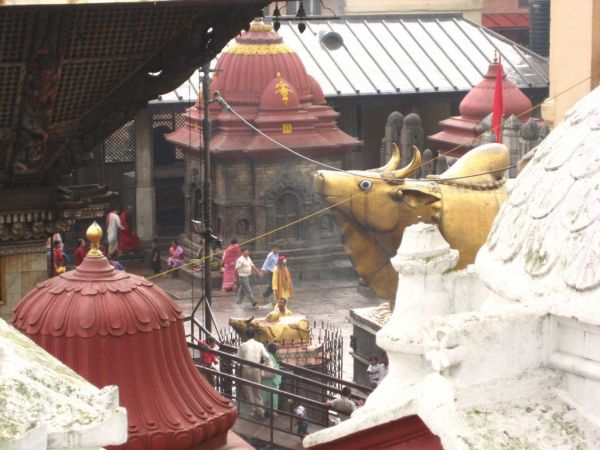
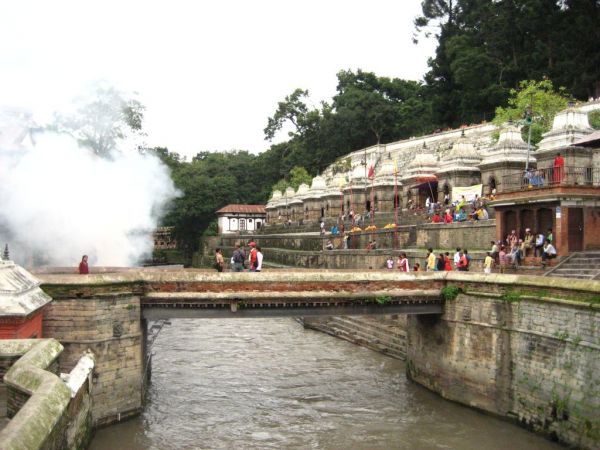
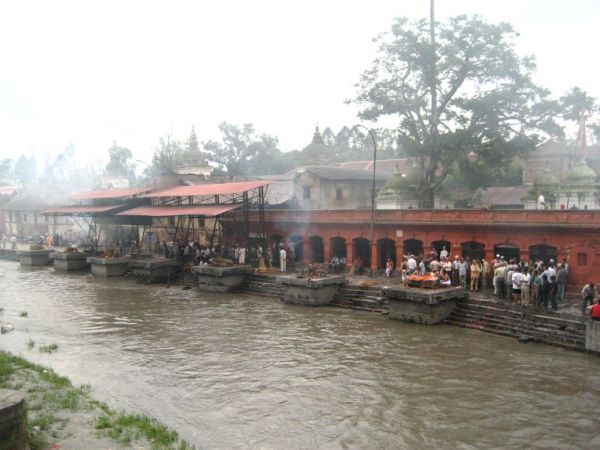
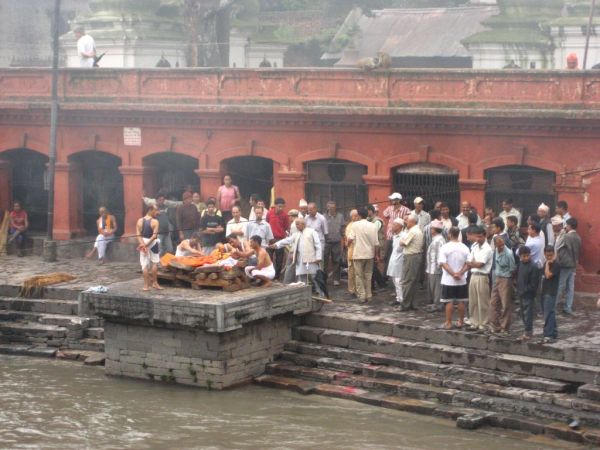

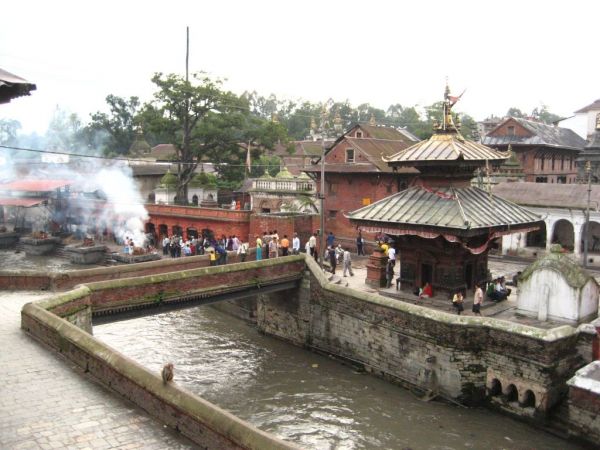
I clear away negative vibes from my spirit walking towards one of the biggest stupas in the world, the Bodhnath stupa. While a procession of followers paces clockwise around the stupa, a wind of positive energy cheers me up. The multicoloured Buddhist flags move about. After the painful scene of the cremations, I need to mix with this crowd and to find again a little bit of inside peace.
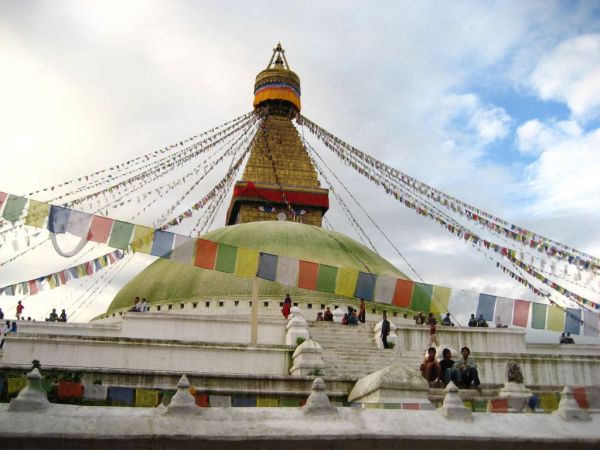
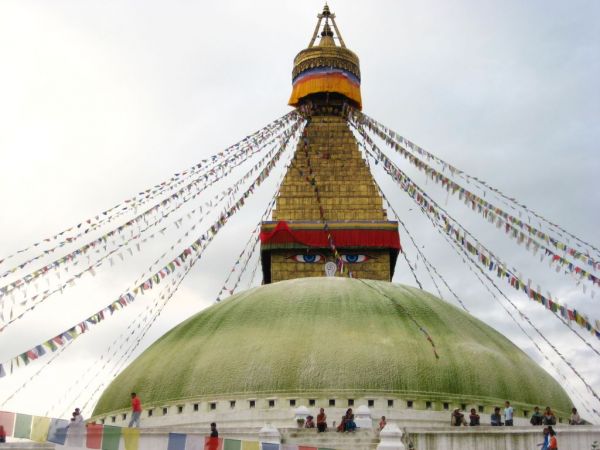
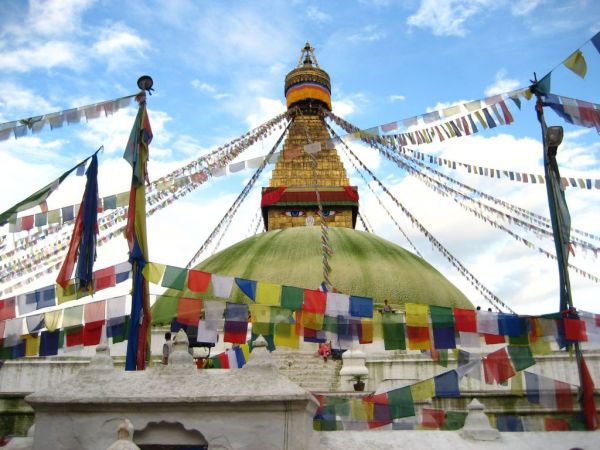
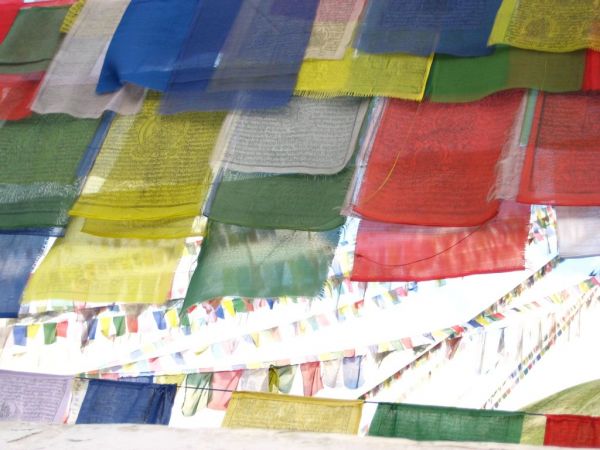


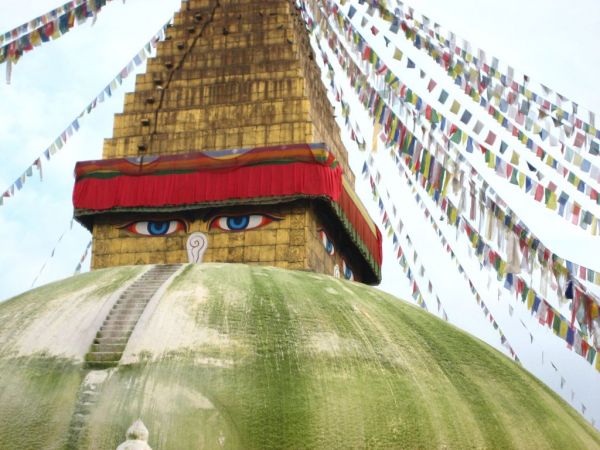
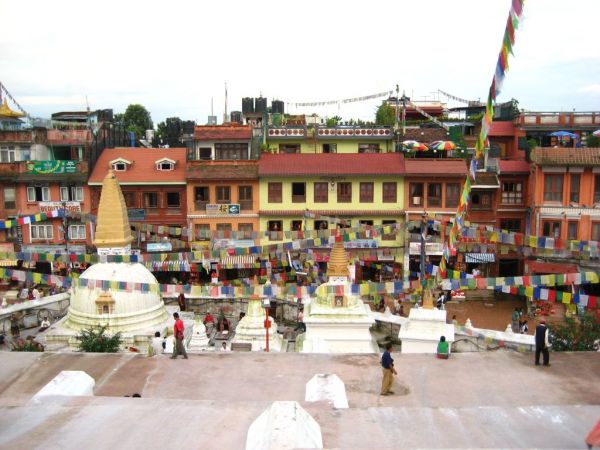
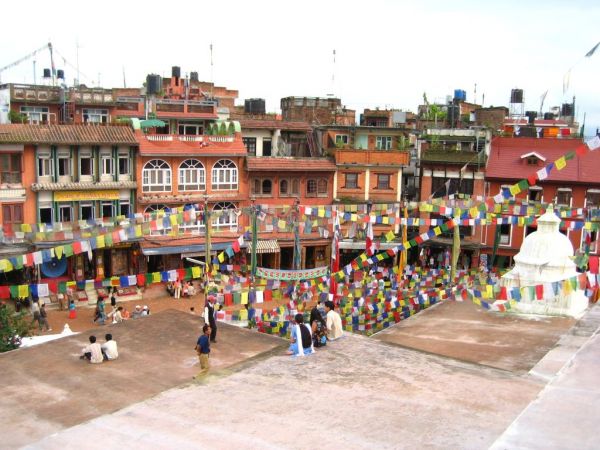
« previous entries - page 3 of 5 - next entries »






 visits
visits